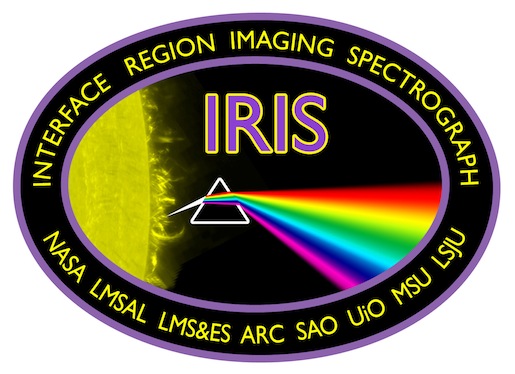It looks like you're using an Ad Blocker.
Please white-list or disable AboveTopSecret.com in your ad-blocking tool.
Thank you.
Some features of ATS will be disabled while you continue to use an ad-blocker.
3
share:
NASA successfully launched the Interface Region Imaging Spectrograph (IRIS) satellite from an L1011 carrier plane. The satellite was carried into
orbit on a Pegasus rocket. NASA was pleased with the launch, and said from the early data the mission may be able to go longer than the two years
planned. A previous satellite launched in this manner lasted 12 years, and was only turned off when its replacement was launched.
IRIS carries a UV telescope, and spectrograph, and is designed to study the sun from the transitional region, to the corona, making an unprecedented scrap book of activity. They are attempting to determine why the sun's atmosphere heats the way it does.
www.aviationweek.com.../article-xml/awx_06_28_2013_p0-592319.xml
IRIS carries a UV telescope, and spectrograph, and is designed to study the sun from the transitional region, to the corona, making an unprecedented scrap book of activity. They are attempting to determine why the sun's atmosphere heats the way it does.
NASA reports “a great insertion orbit” for its newest orbiting telescope for studying the Sun’s dynamic temperature bands, which was drop-launched from a former airliner off the central California coast at 7:28 p.m. PDT June 27.
The Interface Region Imaging Spectrograph (IRIS) spacecraft is to operate from about a 400-mi.-high Sun-synchronous orbit, from which it will study solar and plasma physics, space weather and astrophysics to gain a better understanding of how the Sun’s internal convective flows power its atmospheric activity. Spikes in that activity can interrupt electrical grids and disrupt communications satellites.
The launch used a three-stage Orbital Sciences Pegasus XL booster dropped from Orbital’s L-1011 flying at 39,000 ft. about 100 mi. northwest of Vandenberg AFB, Calif. The mission operations center at NASA’s Ames Research Center reported that the solar array deployment and initial systems operations are all nominal.
www.aviationweek.com.../article-xml/awx_06_28_2013_p0-592319.xml
reply to post by Zaphod58
I always find it interesting that NASA insists on naming each of its spacecraft after Greek gods or goddesses.
Iris the goddess of communications and messages was always depicted as a Rainbow.
Don't think for an instant that was lost on the mission patch design team as the craft has a spectrometer that splits the light as a prism or rain into a Rainbow of color...

Makes me wonder what message the Sun will be telling us.
I always find it interesting that NASA insists on naming each of its spacecraft after Greek gods or goddesses.
Iris the goddess of communications and messages was always depicted as a Rainbow.
Don't think for an instant that was lost on the mission patch design team as the craft has a spectrometer that splits the light as a prism or rain into a Rainbow of color...

Makes me wonder what message the Sun will be telling us.
Originally posted by abeverage
Don't think for an instant that was lost on the mission patch design team as the craft has a spectrometer that splits the light as a prism or rain into a Rainbow of color...
Makes me wonder what message the Sun will be telling us.
I suddenly have Pink Floyd playing in my head...
♪♫"There's someone in my head, but it's not me"♪♫
edit on 6/29/2013 by Soylent Green Is People because: (no reason given)
Originally posted by abeverage
reply to post by Zaphod58
I always find it interesting that NASA insists on naming each of its spacecraft after Greek gods or goddesses.
Iris the goddess of communications and messages was always depicted as a Rainbow.
Don't think for an instant that was lost on the mission patch design team as the craft has a spectrometer that splits the light as a prism or rain into a Rainbow of color...
Makes me wonder what message the Sun will be telling us.
Yes but will they tell us ????? maybe a small percentage at best.
More of the same
reply to post by Trillium
No and why should they? The masses have proven themselves with pitch forks and torches.
No and why should they? The masses have proven themselves with pitch forks and torches.
Well, according to some, NASA use ancient Greek and Roman god names becase they are Satan worshippers.
Hmm, I wonder what kind of message the Sun would give NASA?
Hmm, I wonder what kind of message the Sun would give NASA?
new topics
-
Who guards the guards
US Political Madness: 2 hours ago -
Has Tesla manipulated data logs to cover up auto pilot crash?
Automotive Discussion: 4 hours ago -
whistleblower Captain Bill Uhouse on the Kingman UFO recovery
Aliens and UFOs: 9 hours ago -
1980s Arcade
General Chit Chat: 11 hours ago
top topics
-
Lawsuit Seeks to ‘Ban the Jab’ in Florida
Diseases and Pandemics: 16 hours ago, 21 flags -
CIA botched its handling of sexual assault allegations, House intel report says
Breaking Alternative News: 14 hours ago, 10 flags -
whistleblower Captain Bill Uhouse on the Kingman UFO recovery
Aliens and UFOs: 9 hours ago, 9 flags -
Deadpool and Wolverine
Movies: 12 hours ago, 4 flags -
1980s Arcade
General Chit Chat: 11 hours ago, 4 flags -
Teenager makes chess history becoming the youngest challenger for the world championship crown
Other Current Events: 13 hours ago, 3 flags -
Who guards the guards
US Political Madness: 2 hours ago, 3 flags -
Has Tesla manipulated data logs to cover up auto pilot crash?
Automotive Discussion: 4 hours ago, 1 flags
3
